There are many everyday examples of Newton’s Third Law which states equal and opposite forces are generated in interactions between objects. A few clear examples are pulling a wagon exerts a forward force on the handle just as it pulls back on your grip, hitting a baseball causes the bat to recoil backward as it launches the ball forward, and standing exerts a downward force on the ground which pushes your body upwards with equal strength.
The rowing of a boat, the bounce of a ball, and the recoil of a gun also demonstrate this principle of equal and opposite reaction forces that is summarized by Newton’s Third Law of Motion.
Examples of Newton’s Third Law
Here are a few Examples of Newton’s Third Law:
1. Rowing a Boat
When rowing a boat, the oars push against the water and the water pushes the oars back, propelling the boat forward. This demonstrates Newton’s Third Law because the force the rower exerts on the water results in an equal but opposite force from the water on the oars.
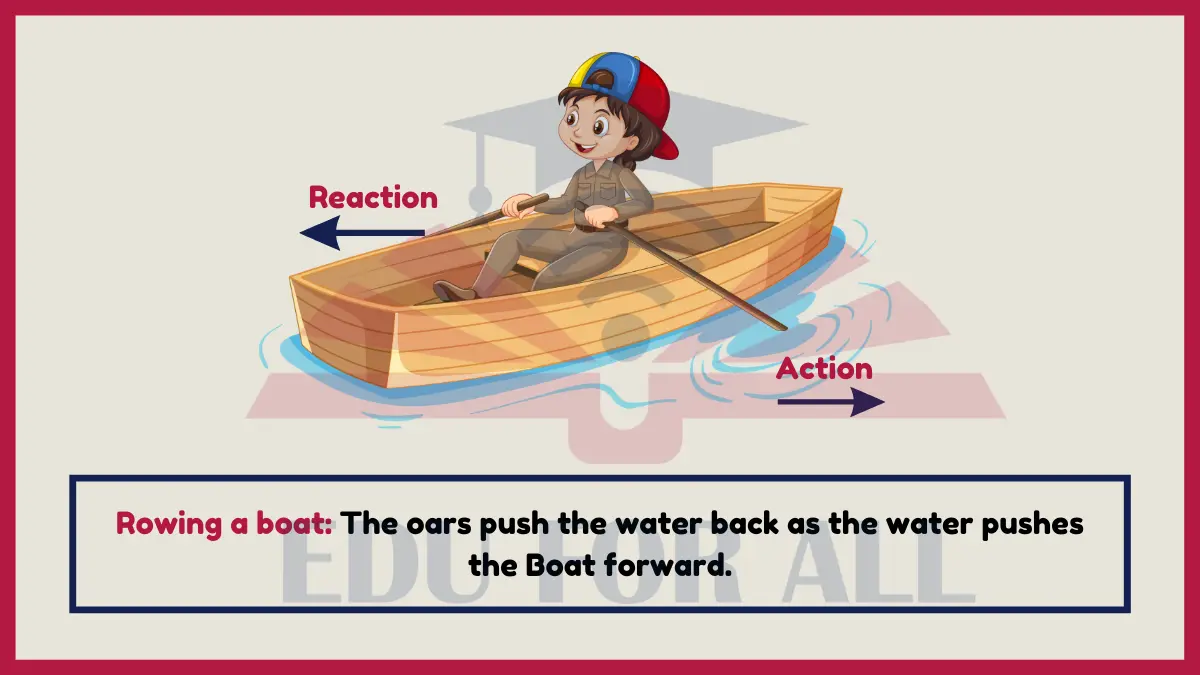
Do You Know?
Professional rowers can produce about 700 watts of power during a race.
Experiment: Row a toy boat across a tub of water using chopsticks or popsicle sticks as oars. Observe how pushing the oars through the water makes the boat move.
2. Bouncing a Ball
When a ball bounces off the ground, it exerts a downward force and the ground pushes up on it with an equal amount of force, sending it back into the air. This reaction force from the ground is required by Newton’s Third Law.
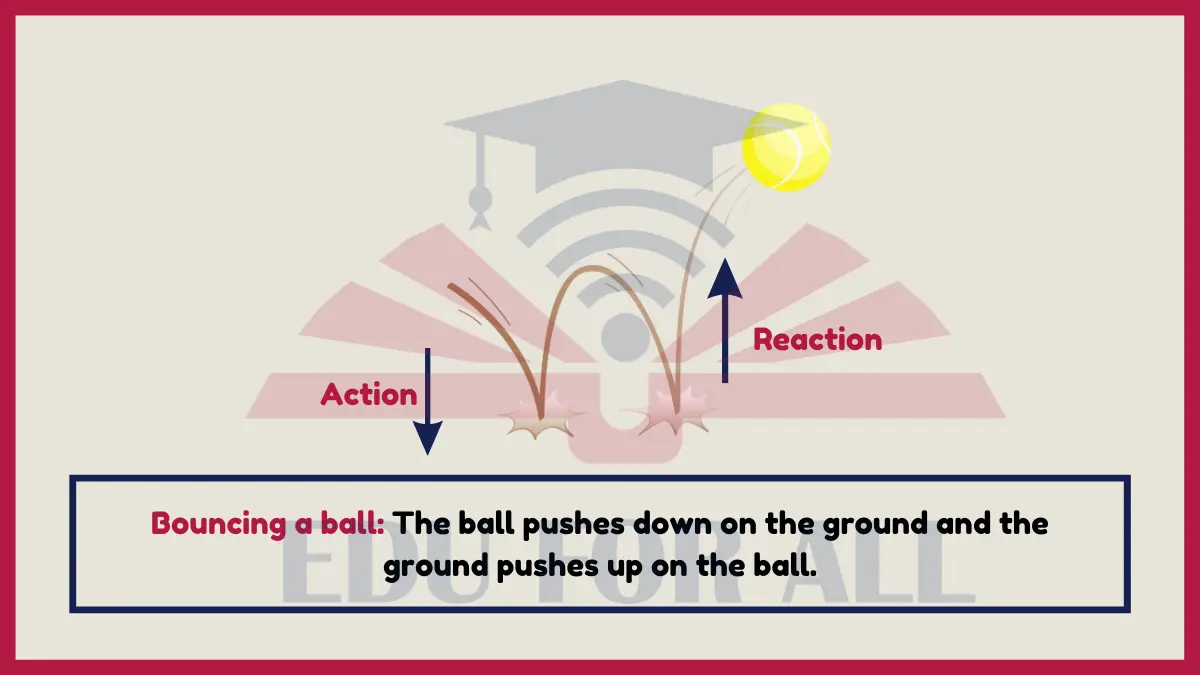
Do You Know?
A professional NBA basketball can be bounced over 10 feet high off the hardwood court.
Experiment: Bounce balls of different sizes on various surfaces and observe the relative heights. Try to correlate bounce height to the force exerted.
3. Recoil of a Gun
The recoil of a gun is a straightforward example of Newton’s Third Law. As the gun fires forward, the body of the gun kicks backward with equal force so total momentum is conserved.

Do You Know?
Firing a large caliber rifle can create a recoil force of over 100 pounds.
Experiment: Attach a toy gun on wheels to a string across a table, with a weight hanging off the other end. Observe how firing the gun makes the weight rise from the recoil force.
4. Rocket Launch
As hot gases are ejected down from the base of a rocket, the rocket receives an equal upward push propelling it into space. The plume of gases pushes on the rocket in one direction, and the rocket pushes back on those gases in the opposite direction.

Do You Know?
The Saturn V rocket produced 34.8 million newtons of thrust to lift Apollo spacecrafts to the Moon.
Experiment: Make a simple stomp rocket with paper and tape, half-fill a soda bottle with water, pump air into it and stomp to launch it. Observe the rocket lift off vertically as the air escapes the bottle.
5. Pulling a Wagon
As you pull forward on a wagon or other object with a rope, the wagon pulls backward on the rope with an equal force. The wagon moves as you overcome friction and transfer momentum through the rope.
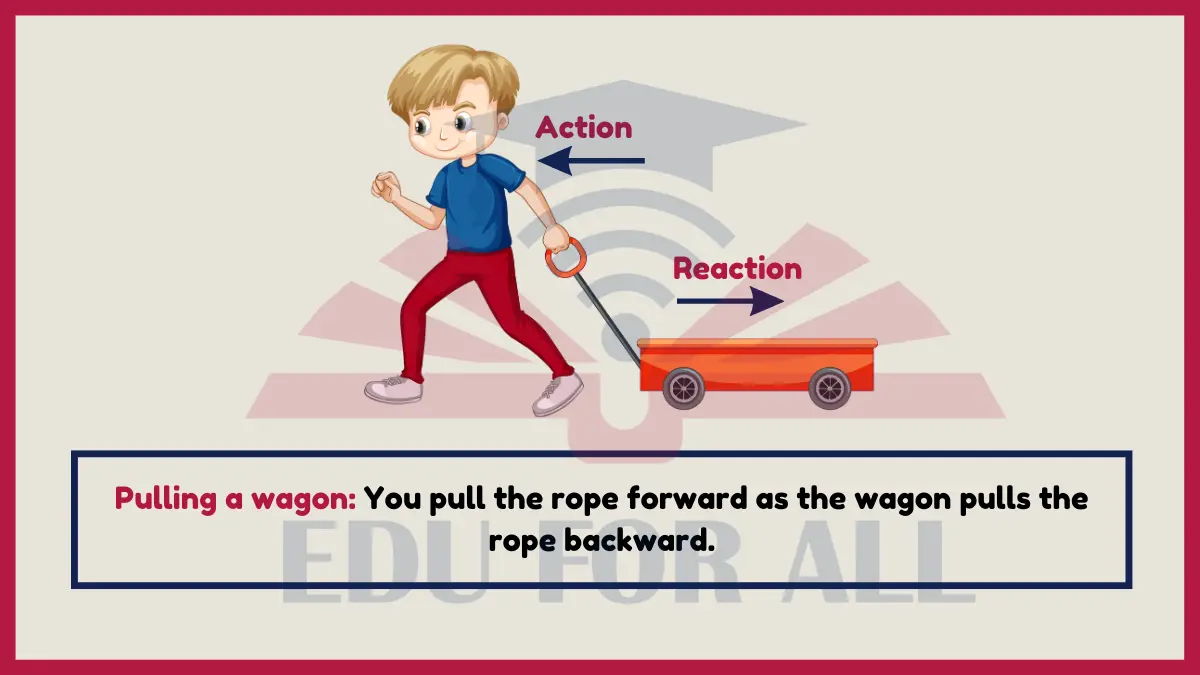
Do You Know?
The largest wagon trains in the 1800s had over 100 wagons pulled by oxen teams.
Experiment: Connect a spring scale to a small wagon full of blocks. Pull horizontally on the scale while observing the reading to measure the equal and opposite force from the wagon.
6. Swinging a Bat
As a batter swings the bat forward to hit a pitch, the bat exerts a force forward on the ball, and the ball exerts an equal force backward on the bat, sending the ball flying forward.

Do You Know?
A home run swing can apply over 1000 pounds of force in less than a second.
Experiment: Hang a softball from strings against a backdrop marked with measurements. Hit the ball with a bat and observe how far the equal and opposite reaction sends the ball backwards.
7. Jumping
When jumping, a person pushes down against the ground, and the ground pushes up on the person with an equal and opposite force, propelling them upwards. This reaction force enables jumping.
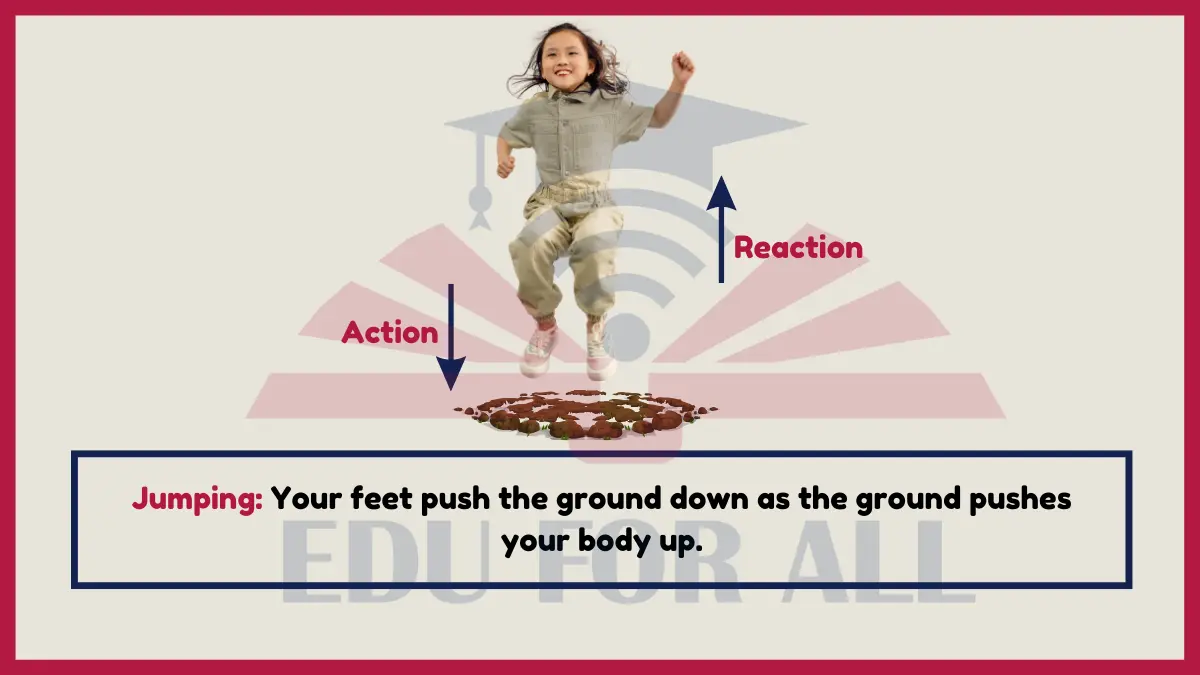
Do You Know?
The highest basketball dunk reached 12 feet 6 inches upwards.
Experiment: Jump as high as you can on a sandy surface. Measure the depth of the indentation left in the sand by the equal and opposite push of your feet against the ground.
8. Crashing Toy Cars
When two toy cars collide, they both feel an impact that causes the cars to bounce backward. This demonstrates both cars exert equal force on each other, as required by Newton’s Third Law for the reaction forces to balance.
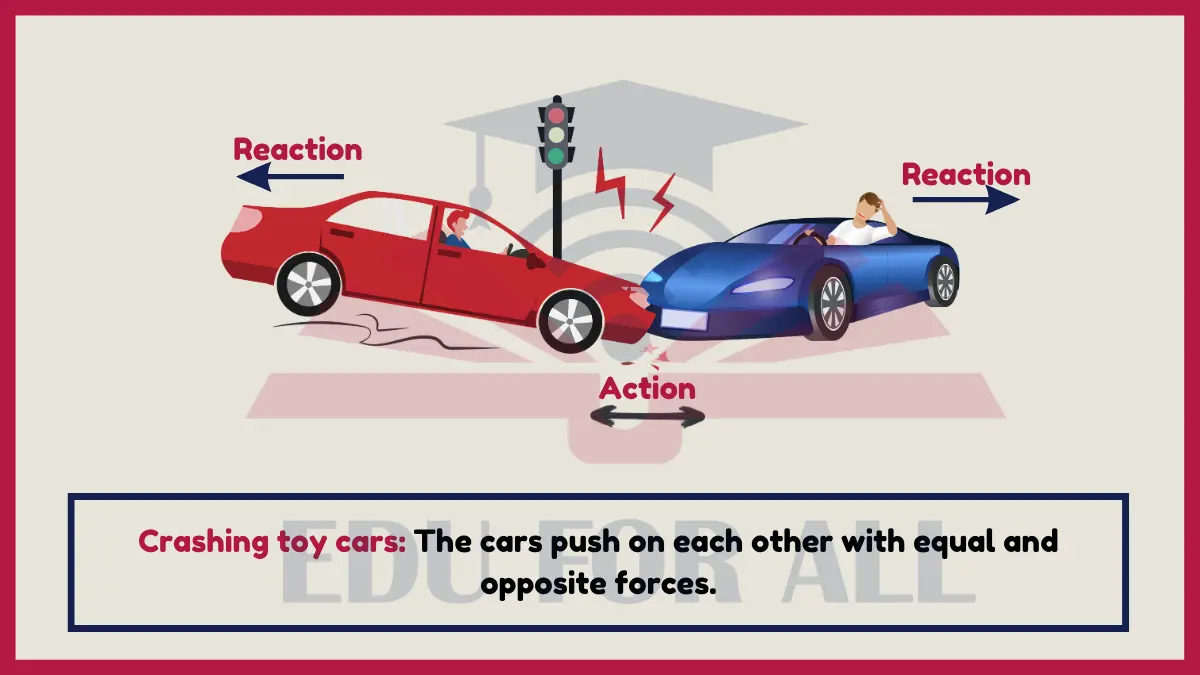
Do You Know?
Bumper cars carry their entire electric supply onboard and have no external wires while driving.
Experiment: Use a smooth tabletop and equal sized toy cars. Roll them into head on collisions while observing how both cars bounce backwards with equal velocities after impact.
9. Firing a Slingshot
As the slingshot fires, the band pushes forward on the projectile, and the projectile exerts an equal and opposite backward force on the band, propelling the projectile forward at high speeds.
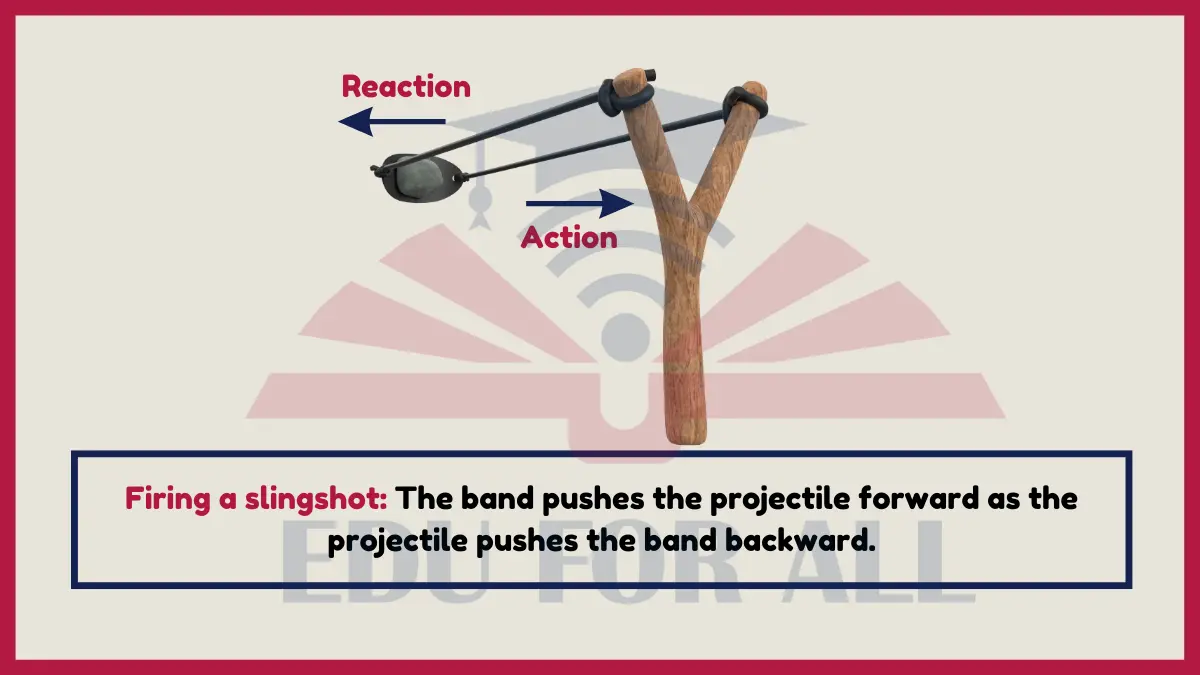
Do You Know?
Ancient slingshot warriors could hit targets at distances over 400 yards.
Experiment: Hang a slingshot vertically on a stand. Place Styrofoam balls on the band and fire horizontally to observe the equal and opposite reactions. Calculate projectile range and velocity.
10. Pressing Against a Wall
Unlike resting on a wall, when actively pressing against a wall with your hands, the wall pushes back with equal force against your push. The wall exerts this equal and opposite force due to Newton’s Third Law.
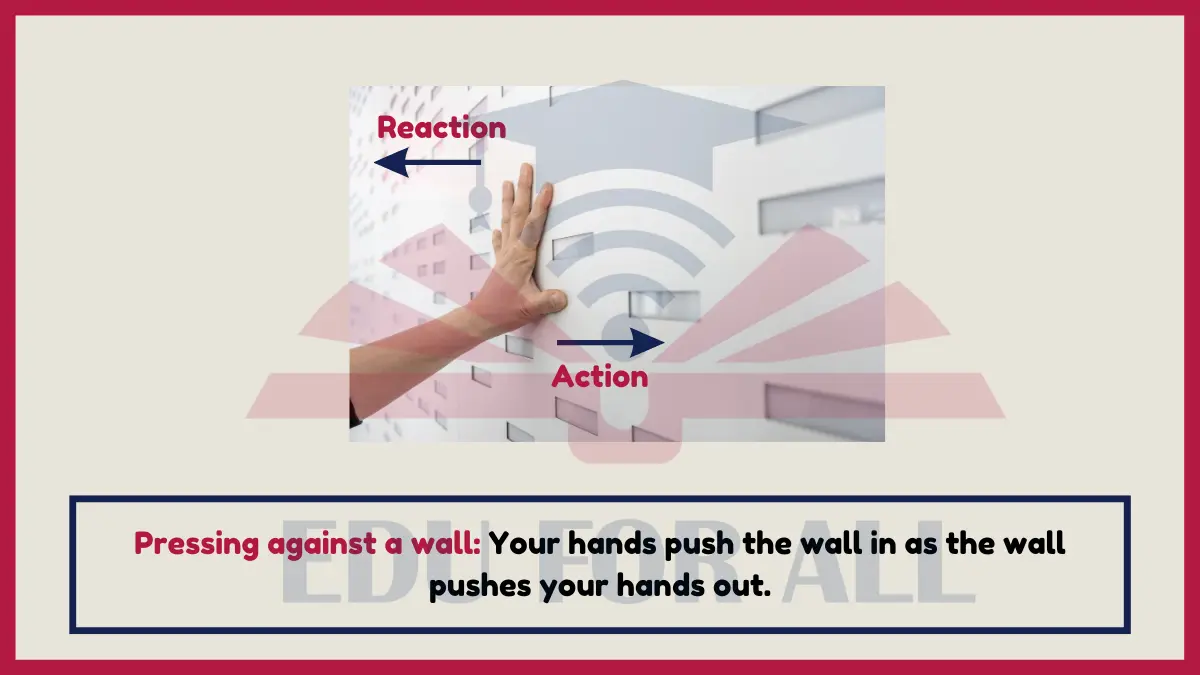
Do You Know?
The largest human-made walls like the Great Wall of China are over 20 feet tall to defend against invasions.
Experiment: Stand facing a bathroom scale pressed up against a wall. Push hard against the wall and observe the scale reading increase from the equal and opposite wall force against your hands.
11. Hammering a Nail
As a hammer drives a nail into wood, the head of the hammer pushes the nail downward with a force and the nail pushes the hammer head upward with an equal reaction force, keeping overall momentum balanced.
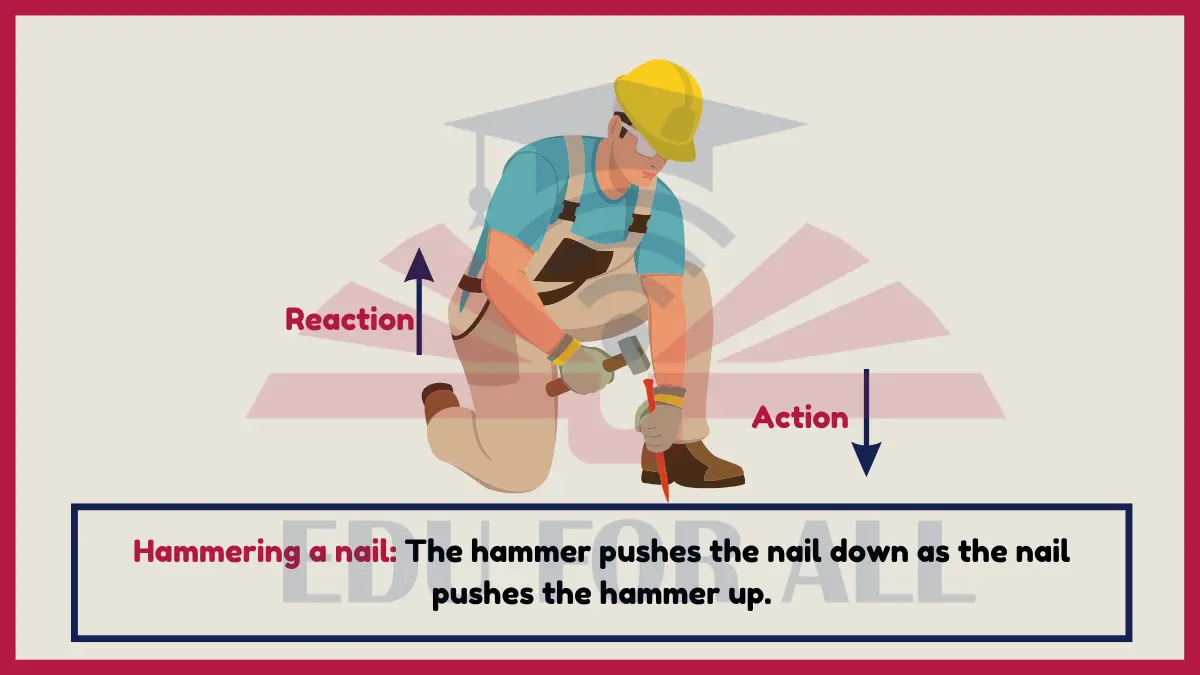
Do You Know?
In physics, this reaction force is used to mathematically calculate the acceleration achieved when hammering against resistance.
Experiment: Hammer a nail on top of a bathroom scale on its side. Notice the force reading peaks when impact occurs due to the nail’s equal and opposite push against the hammer head.
12. Shooting an Arrow
When shooting an arrow from a bow, the bowstring pushes forward on the arrow as the arrow exerts an equal and opposite backward force on the bowstring according to Newton’s Third Law, causing the arrow to release rapidly.
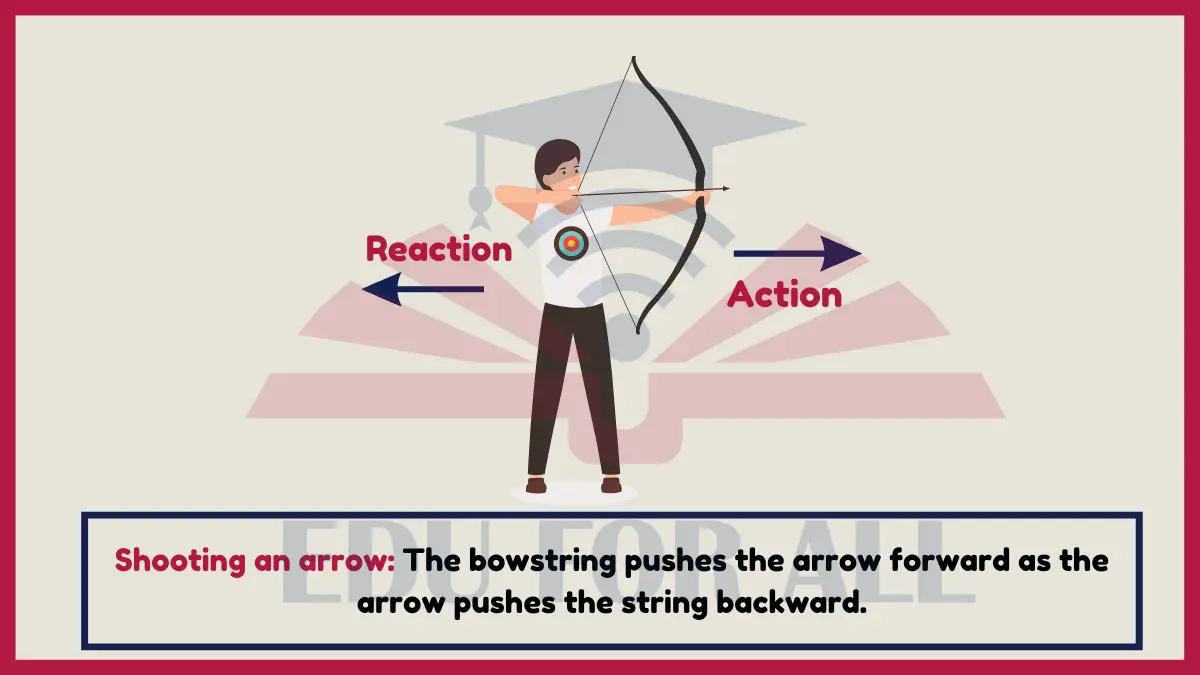
Do You Know?
Ancient archers could shoot arrows over 400 yards using recurve bows.
Experiment: Construct a toy bow and arrow using popsicle sticks and rubber bands. Observe the reaction forces as the arrow is “fired” from the band. Calculate arrow velocity.
13. Roller Coasters
In roller coaster loops, the track supplies an inward centripetal force on riders as they move in circular motion, and riders push outward on the tracks with an equal but opposite force as required for equilibrium.
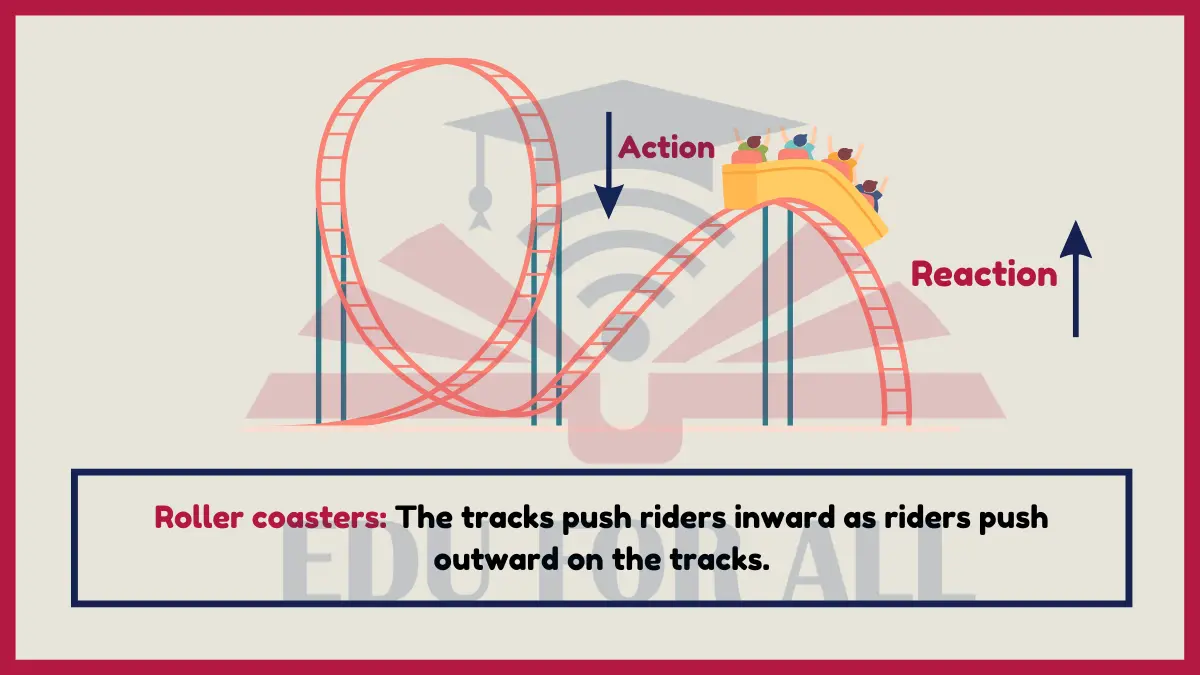
Do You Know?
Roller coasters can generate up to 6 G’s of acceleration on vertical loops, producing intense sensations.
Experiment Video Analysis: Use video analysis software to analyze rider positions and track angles on vertical loops. Estimate the magnitude of equal and opposite forces using centripetal motion equations.
14. Pushing Against Static Friction
When pushing a heavy object at rest, static friction pushes horizontally opposite your applied force. As the applied force overcomes the maximum static friction force, the crate begins to move.

Do You Know?
Coefficients of static friction between wood on wood can be over 0.5, meaning a normal force over 100 lbs results in over 50 lbs of friction.
Experiment: Place a wood block on a wood table attached to a spring scale. Gradually increase the horizontal force as measured by the scale until the block begins to slide. This reading indicates the maximum static friction force, which is equal and opposite.
15. Wind Power
In wind turbine design, the turbine blades push backwards on the wind flow turning a central rotor shaft. The wind pushes the blades forward with an equal reaction force that generates rotational power according to Newton’s Third Law.
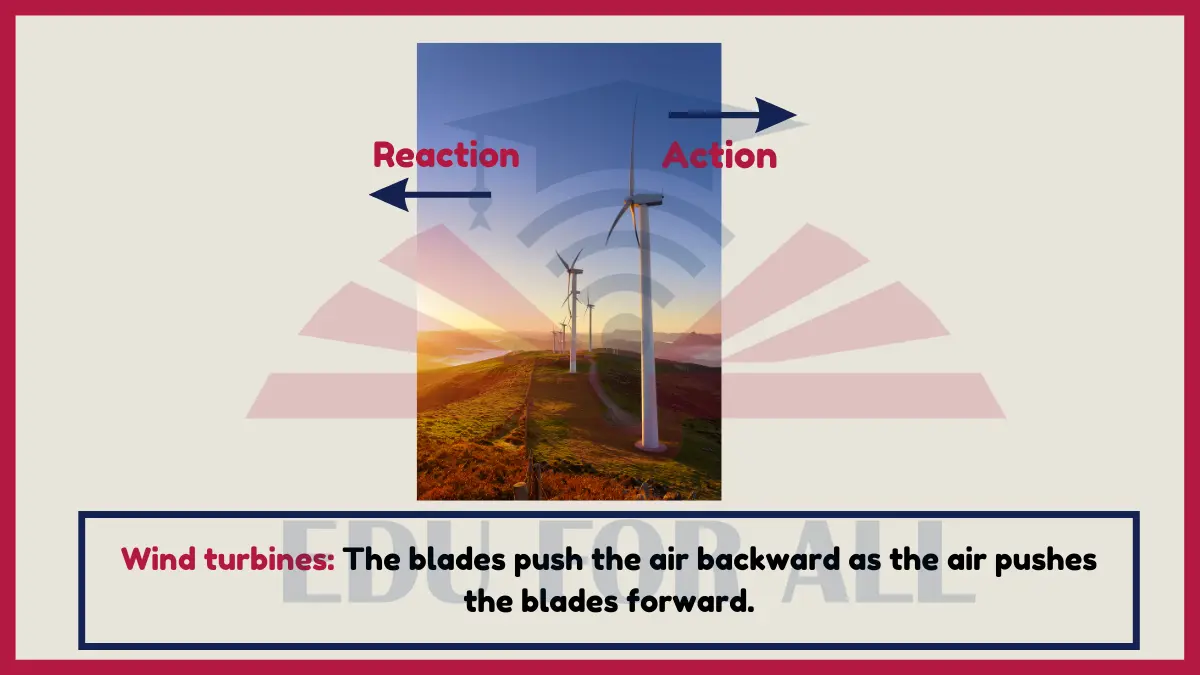
Do You Know?
Large-scale wind turbines can be over 400 feet tall from ground to turbine tip at maximum vertical rotation angle.
Experiment Video Analysis: Analyze slow motion turbine rotation footage. Use vector diagrams to evaluate equal wind reaction forces on tilted turbine blades as they rotate. Calculate torque produced.

